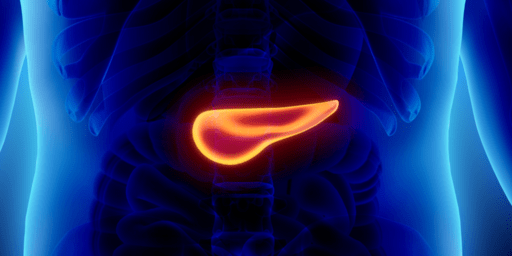Acute Pancreatitis: Symptoms, Diagnosis, Causes, Types and Treatment

What is acute pancreatitis?
The pancreas is a gland in the upper abdomen, behind the stomach that produces digestive enzymes and hormones for maintaining blood glucose levels.
Acute pancreatitis is a sudden and severe inflammation (swelling) of the pancreas. The severity of pancreatitis ranges from mild to severe. Severe pancreatitis can be life-threatening.
Causes of acute pancreatitis
Several factors can cause acute pancreatitis. These include:
- Alcohol consumption: Excessive as well as regular alcohol consumption can cause pancreatitis.
- Gallstones: Stones that form in the gallbladder can pass to the bile duct and block the ducts that carry digestive enzymes from the pancreas to the small intestine and cause pancreatitis.
- High levels of triglycerides: Triglycerides are a type of fat found in the blood. High levels of triglycerides can cause the pancreas to become inflamed.
- Certain medications: Some medications can increase the risk of acute pancreatitis.
- Pancreatic tumours and cancers: Sometimes pancreatic tumours and cancers present with acute pancreatitis.
- Complication after endoscopic retrograde cholangiopancreatography (ERCP).
- Other causes: Rarely, high levels of calcium in the blood, infections, trauma to the abdomen, and autoimmune diseases can also cause pancreatitis.
It is important to note that having one of these risk factors does not mean that a person will develop acute pancreatitis.
Symptoms of acute pancreatitis
Acute pancreatitis is a condition that causes sudden, severe pain in the upper part of the abdomen. This pain may also be felt in the back, chest, or sides of the body. The pain may feel intense and may be accompanied by nausea and vomiting. The person may also experience shortness of breath, fever, or sweating. Symptoms can range from mild to severe.
Diagnosis of acute pancreatitis
To be diagnosed with acute pancreatitis, a person must meet at least two of the following three criteria:
- Characteristic abdominal pain: This refers to pain in the upper part of the abdomen, near the stomach, that is typical of acute pancreatitis.
- Biochemical evidence of pancreatitis: This refers to abnormal levels of certain enzymes, such as amylase or lipase, in the blood. The pancreas produces these enzymes and their levels can be measured to help diagnose acute pancreatitis.
- Radiologic evidence of pancreatitis on abdominal imaging: This refers to evidence of pancreatitis on imaging tests of the abdomen, such as an ultrasound or CT scan.
These criteria are used to help diagnose acute pancreatitis and determine the appropriate treatment plan.
Type, severity, and phases of acute pancreatitis
There are two main types of acute pancreatitis:
- Interstitial oedematous pancreatitis: It is marked by swelling of the pancreas because of inflammation
- Necrotizing pancreatitis: Necrosis (tissue death) in the pancreas and surrounding areas defines this variant of pancreatitis.
The severity of acute pancreatitis is based on the presence or absence of complications. The complications can be local complications or organ failure. Organ failure is a condition in which an organ in the body can no longer function at a normal level. Organ failure includes kidney failure, liver failure, heart failure, and respiratory failure.
- Mild acute pancreatitis: It occurs in most cases and is defined by the absence of these complications.
- Moderately severe acute pancreatitis: When there is temporary organ failure or local complications of pancreatitis.
- Severe acute pancreatitis: It is less common and is characterized by persistent organ failure.
We can also classify acute pancreatitis based on the phase of the disease.
- The early phase occurs in the first 1-2 weeks and is described by a systemic inflammatory response syndrome.
- The late phase occurs beyond the first 2 weeks and is characterized by the development of local complications and infection. This phase is only in patients with severe acute pancreatitis.
Complications of acute pancreatitis
These may include abscess formation, pseudocyst formation, and organ failure. Abscesses are pockets of infected tissue that can form within the pancreas or surrounding organs, and pseudocysts are fluid-filled sacs that can form within the pancreas. Both abscesses and pseudocysts can cause abdominal pain and may require drainage or surgical intervention. Organ failure, including kidney failure and respiratory failure, can occur if the inflammation spreads to other organs and can be life-threatening.
Treatment of acute pancreatitis
Treatment may involve hospitalization for symptom management and to identify the underlying cause. This may include in severe cases, supportive care in the intensive care unit. Treatment typically involves a combination of pain management, fluid resuscitation, nutritional support, and management of the systemic inflammatory response. If the cause of the pancreatitis is identified, treatment may also include the removal of gallstones or other interventions to address the underlying cause.
For patients with mild pancreatitis, oral feeding can be started as tolerated within the first 24 hours. In cases of severe or necrotizing pancreatitis, enteral nutrition (feeding through a tube) should be started as soon as possible after admission.
Antibiotics are not usually recommended as prophylactic therapy but may be used in cases with confirmed infected necrosis. Infection develops in pancreatic necrosis in 20% to 40% of patients with acute severe pancreatitis
If a patient has infected pancreatic necrosis, drainage and/or debridement (removal of dead or infected tissue) may be necessary. Percutaneous drainage (through the skin) or minimally invasive surgical procedures, such as laparoscopic or videoscopic-assisted techniques, may be used to remove necrotic tissue and pus. Where these methods are not effective, open surgical debridement may be necessary.
Patients with noninfected pancreatic necrosis who have abdominal pain, nausea, vomiting, and nutritional failure over an extended period, as well as any accompanying complications like fistulas, gastrointestinal obstruction, biliary obstruction, or persistent systemic inflammatory response syndrome, may need drainage and/or debridement.
Outlook
Acute pancreatitis is a serious condition that can sometimes be life-threatening. The overall mortality rate is about 5%, but this increases to 35% in severe cases and 47% in cases of multiorgan failure. The mortality rate is higher in patients with necrotizing pancreatitis (17%) compared to those with interstitial edematous pancreatitis (3%). If necrosis is infected, the mortality rate is even higher. After the first episode of acute pancreatitis, the condition can recur in 16.5-25% of patients within the first several years.
While acute pancreatitis is a serious condition, most people with the condition make a full recovery with proper treatment.
To reduce the risk of developing pancreatitis, it is important to maintain a healthy diet, limit alcohol consumption, and manage any underlying health conditions such as gallstones or high triglycerides. It is also important to seek medical attention promptly if you experience symptoms of pancreatitis, as early treatment can improve outcomes and reduce the risk of complications.
In conclusion, acute pancreatitis is a sudden and severe inflammation of the pancreas that a variety of factors can cause. Prompt treatment is important to manage symptoms and prevent complications and taking steps to maintain a healthy lifestyle can help reduce the risk of developing the condition.
Wish you a speedy recovery!


